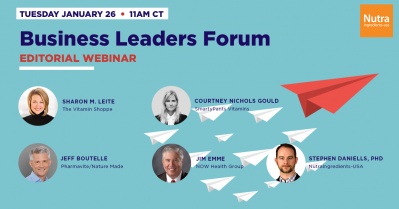Medical device developer eyeing personalized nutrition opportunities

NutraIngredients-USA spoke with Tej Patel, president and cofounder of the company Fluxergy. The company has developed an all in one approach to medical testing via a bench top device. The device is said to combine PCR, chemistry, immunochemistry, and cytometry in one device.
At the moment the device is in a research-only mode, but that could change rapidly, as the company received $30 million in development funding to work up a rapid test to detect SARS-CoV-2, the virus that causes COVID-19.
Making test results part of the real time conversation
The investment will have a trickle down effect, said Patel, helping to energize the entire company. His goal is nothing less that to revolutionize how diagnostic testing is done.
“When you look at how diagnostic testing is done today, one of the big issues is that getting basic health information about ourselves is very tied up in the process,” Patel said.
“You have to schedule an appointment for a test, get a blood sample drawn, then go back to the doctor days or weeks later and the doctor explains your results. It’s a long and difficult process,” he said.
“We have developed a point of care technology. It’s basically a lab in a box,” he said.
Patel said point of care testing in not necessarily a new idea. But what is new with his company’s device, is said, is the speed and the low cost to the user.
“We’ve been developing our technology for about seven years now,” Patel said. “Our system is designed to perform multiple tests and to work with different sample types, such as blood, urine and saliva.”
The system uses a series of dedicated cards designed to work with each test and sample type. The speed with which results can be processed can be orders of magnitude quicker than how results for many diagnostic tests are reported now, Patel said. It meant that the tests could form part of a real dialogue between the patient and the care giver.
That would be the groundwork for the use of the device in personalized nutrition, Patel said. The company uses a model of partnering with other companies to develop new tests for the device, and he said nutritional testing is one of the avenues they’re eager to explore.
“Everybody’s body is different. How do we make that information accessible to the consumer?” he said.
Personlized nutrition application
Patel said there is a lot of hype in the nutritional space concerning personalized nutrition, but not very much data to back it up. The notion that products or eating strategies developed taking the body metrics of an individual consumer into account would work better for that individual consumer is attractive, but there’s not much evidence yet to prove that it’s true.
“For example, you hear about people going on all these different diets. But there is really no qualitative information. Is this diet really working for me? Similarly, you could ask if this particular supplement is really working for me?” he said.
Patel said with the new COVID-19 test, his company is looking at targeting the market for workplace reopening. The goal is to provide the device for a few hundred dollars. In addition, health care practitioners are another important market, and he believes supplement companies could also incorporate the device in the marketing of personalized nutrition products.
“There are a number of different markers that might be of interest. It really depends on the tests that a supplement company might want to run and the level of accuracy they were trying to achieve,” he said.
Im










